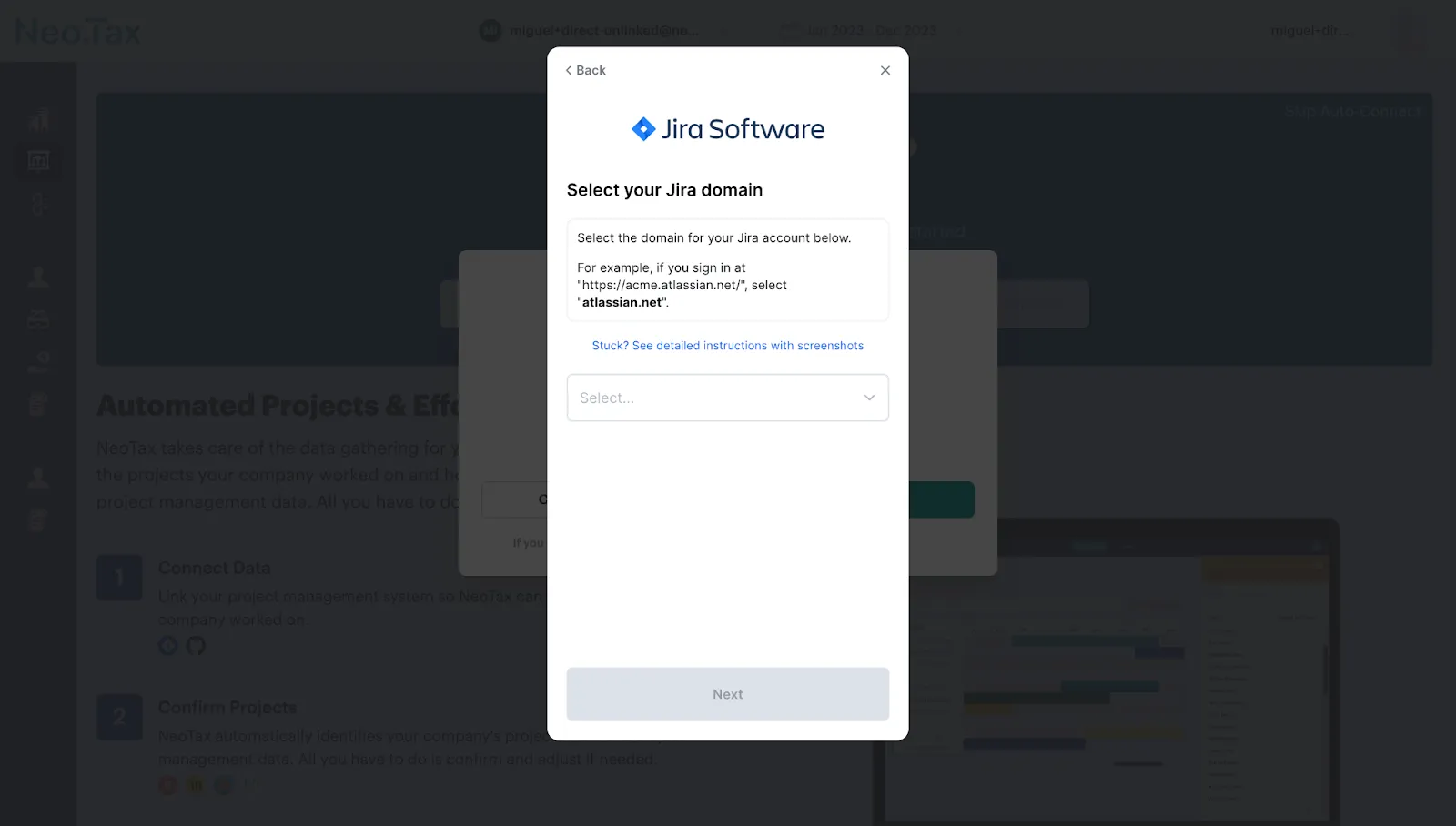

How Neo.Tax uses Merge to launch ticketing integrations 300% faster


How Neo.Tax uses Merge to launch ticketing integrations 300% faster

Neo.Tax factsheet
FinTech
Using Merge, we’ve been able to save our engineers tens of hours per integration, which enables them to solely focus on developing the best solution for automating R&D tax credits and software capitalization.
Integrating with ticketing systems in-house was a suboptimal use of their engineering resources
Neo.Tax, a fintech platform that helps companies provide audit-proof documentation for R&D tax credits and software capitalization, needed to integrate with customers’ ticketing systems to streamline the process of generating these reports for customers.
They initially considered building ticketing integrations in-house. But after discovering how much time each integration build would take, coupled with their limited developer resources, they knew they needed to outsource their integrations.
Miguel Hernandez, the Tech Lead at Neo.Tax, explains further: “As a startup, we only have a few developers on staff, and we’d much rather have them focused on improving key facets of our platform, such as the AI features that enrich our customers’ reports, than implementing and maintaining integrations.”
After evaluating a few integration platforms, they ultimately landed on Merge because its unified API covers the vast majority of ticketing data they need to sync and applications they need to integrate with.
Using Merge’s ticketing integrations to further automate the process of creating audit-ready documents
They built to Merge’s Unified API within 2 weeks and were able to take several ticketing integrations live, including Asana, Jira, and GitHub.
These integrations allow Neo.Tax to access a wide range of ticketing data from customers’ systems, including tickets’ names, creators, assignees, due dates, teams, tags, and created dates.
Here’s more on how the ticketing sync works within the context of using their platform:
1. Once a customer provides their authentication credentials in Neo.Tax (via Merge Link), the connection gets established and the data from the customer’s ticketing tool starts to sync.

2. After all the data gets pushed into Neo.Tax, they use large language models (LLMs) to enrich the data, like calculating certain metrics, such as effort estimation, and classifying a given ticket with a specific R&D category.
Miguel explains why this application of AI lets them provide an unrivaled experience: "By giving our LLMs ticketing data, they can use semantic context to determine the project a given ticket falls under, if any, and how many hours a ticket takes to complete. This gives us a competitive advantage, as we don't have to rely on accurate record keeping of work hours and projects within customers' ticketing systems."
3. Once the ticketing data is enriched, Neo.Tax can identify the relevant projects these tickets fall under, the individuals who worked on specific projects, and how much time they allocated towards these projects within a specific timeframe (the timeframe for R&D credits is a fiscal year, while for software capitalization, it’s a quarter).


4. The customer can then log into the platform, view the projects and allocations, make edits as needed, add additional information about their company and, finally, submit everything for review.

5. A certified accountant would review the submission to ensure everything looks accurate, and once they approve it, the customer would be able to review and download their audit-ready documents within Neo.Tax.

Launching integrations 300% faster and saving their engineers tens of hours per integration build
Based on their experience with implementing integrations in-house, Miguel estimates that it would have taken his team roughly 8 weeks to launch the integrations that he took live with Merge in 2; in other words, they’ve been able to launch integrations 300% faster.
They’ve also been able to empower their engineers to prioritize solving the trickiest and most valuable problems for their customers.
Miguel elaborates: “Using Merge, we’ve been able to save our engineers tens of hours per integration, which enables them to solely focus on developing the best solution for automating R&D tax credits and software capitalization."
Finally, Miguel and his team have found the integrations to be helpful in closing more deals.
We look forward to helping Neo.Tax close more deals through additional ticketing integrations in the years to come.
Customer stories
Make integrations your competitive advantage
Stay in touch to learn how Merge can unlock hundreds of integrations in days, not years



.webp)

.svg)

